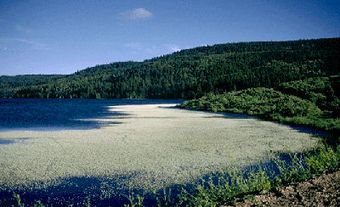Natural History
The park includes numerous peaks, valleys and lakes; elevations range from sea level at Herbert Inlet to 2,200 m at Golden Hinde, the island's highest peak. Small glaciers, remnants of an ice sheet that sculptured the area thousands of years ago, cling to a few peaks in the south. Small, swift streams and waterfalls (including Della Falls, Canada's highest) in the centre of the park drain into Buttle Lake.
Vegetation and wildlife distribution reflect the marked variations in altitude, aspect and climate. Vegetation at lower elevations is dominated by western red cedar, various firs and western hemlock; subalpine fir, mountain hemlock and creeping juniper are found higher up. Between the treeline and the glaciers are extensive alpine meadows offering spectacular displays of wildflowers (e.g., paintbrush) in the short summer.
The island's isolation has limited the area's fauna, but wildlife includes deer, Roosevelt elk, wolves and cougars. Birdlife includes kinglets, gray jays, grouse and white-tailed ptarmigan. Trout are common in such areas as Buttle Lake.
Human History
Strathcona Provincial Park is located on the traditional territory of the Coast Salish (see also First Nations in British Columbia). The area was explored in the mid-1800s. When designated BC's first provincial park in 1911, it was named after Donald Smith, 1st Baron of Strathcona and Mount Royal. Logging, mining and reservoir development have influenced the park and aroused debate and opposition by conservation groups. Over the years there have been many additions to the park, for example, the McBride Creek area (37.5 km2) and the Megin watershed (273.90 km2).
Facilities
Facilities include campgrounds, backpacking and cross-country skiing trails, and downhill ski resorts. Strathcona Park Lodge, on Campbell Lake, is a popular centre for wilderness courses and outdoor education.

 Share on Facebook
Share on Facebook Share on X
Share on X Share by Email
Share by Email Share on Google Classroom
Share on Google Classroom

